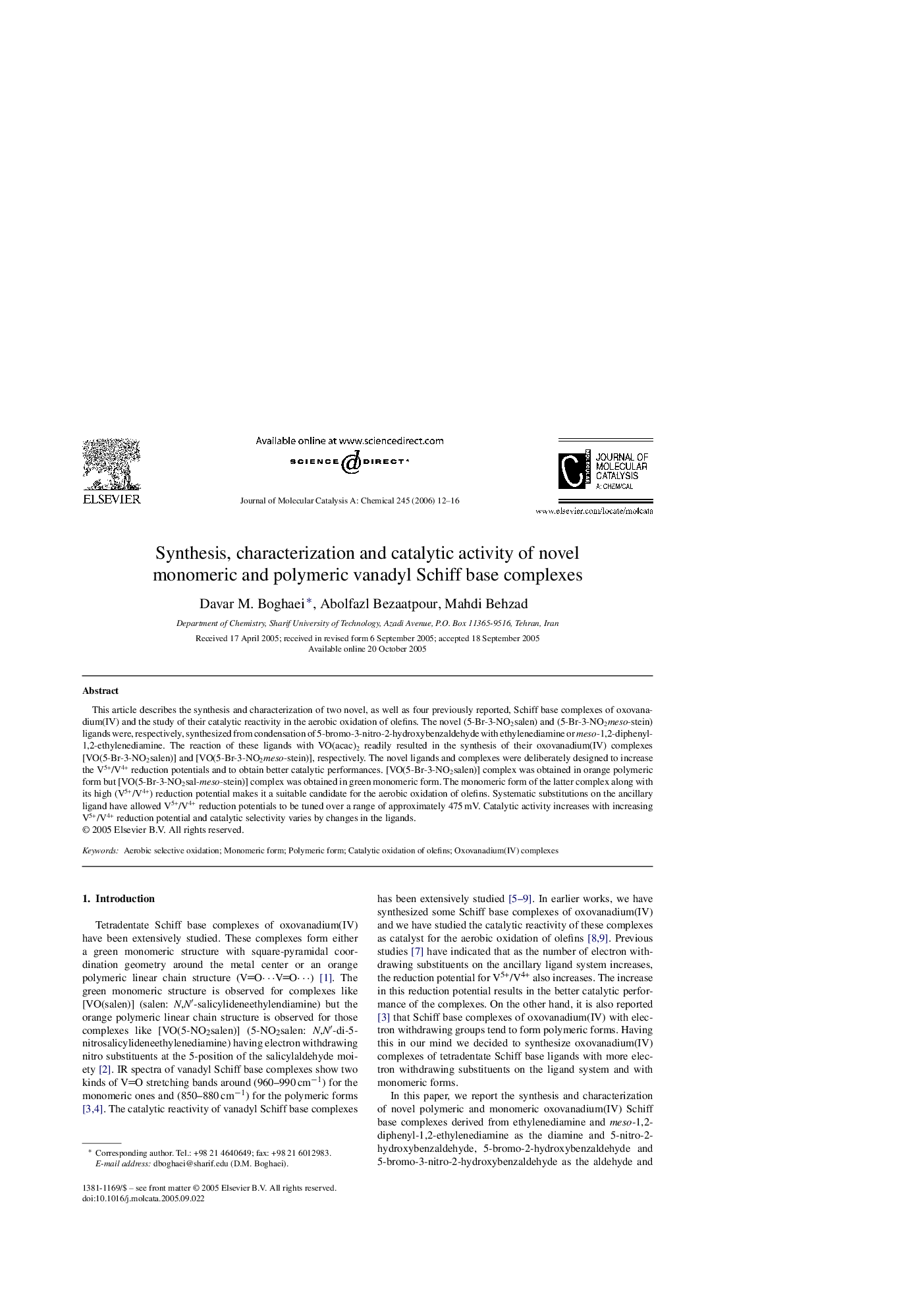| Article ID | Journal | Published Year | Pages | File Type |
|---|---|---|---|---|
| 69129 | Journal of Molecular Catalysis A: Chemical | 2006 | 5 Pages |
This article describes the synthesis and characterization of two novel, as well as four previously reported, Schiff base complexes of oxovanadium(IV) and the study of their catalytic reactivity in the aerobic oxidation of olefins. The novel (5-Br-3-NO2salen) and (5-Br-3-NO2meso-stein) ligands were, respectively, synthesized from condensation of 5-bromo-3-nitro-2-hydroxybenzaldehyde with ethylenediamine or meso-1,2-diphenyl-1,2-ethylenediamine. The reaction of these ligands with VO(acac)2 readily resulted in the synthesis of their oxovanadium(IV) complexes [VO(5-Br-3-NO2salen)] and [VO(5-Br-3-NO2meso-stein)], respectively. The novel ligands and complexes were deliberately designed to increase the V5+/V4+ reduction potentials and to obtain better catalytic performances. [VO(5-Br-3-NO2salen)] complex was obtained in orange polymeric form but [VO(5-Br-3-NO2sal-meso-stein)] complex was obtained in green monomeric form. The monomeric form of the latter complex along with its high (V5+/V4+) reduction potential makes it a suitable candidate for the aerobic oxidation of olefins. Systematic substitutions on the ancillary ligand have allowed V5+/V4+ reduction potentials to be tuned over a range of approximately 475 mV. Catalytic activity increases with increasing V5+/V4+ reduction potential and catalytic selectivity varies by changes in the ligands.
Graphical abstractNovel oxovanadium(IV) complexes containing tetradentate Schiff base ligands have been synthesized and used for oxidation of olefin as catalyst. Figure optionsDownload full-size imageDownload as PowerPoint slide
